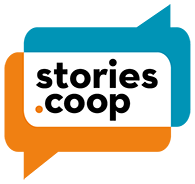The Windvogel is a cooperative association whose goal is the realisation and generation of renewable energy. The Windvogel contributes to this through the development of new wind turbines and the purchasing and operating of existing turbines and solar PV installations. Founded in 1991 the cooperation now has over 2000 members in the Netherlands. It has five turbines with a total capacity of 3.7 MW and there are several projects under development. The Windvogel also supports other local wind and solar energy initiatives with advice and assistance with development, from concept to commissioning.
Windvogel life membership costs just fifty Euros. Aside from the one-off membership fee, members can voluntarily deposit money in the cooperative which is used for maintenance of the current wind turbines and the acquisition of new ones. Members receive a financial return of 5 to 8% on their deposit – the percentage is determined annually by a general assembly of the association. The rate is set depending on the past years wind and financial results.
The cooperative produces a sustainable energy supply for its members, in which each member is both producer and consumer of renewable energy. The system has been in experimental operation since July 2011. We call it self-delivery. Each cooperation member that participates in the self-delivery system is supplied electricity by the cooperative to a maximum of 3500 kWh per year. A Green energy provider will provide electricity (and green natural gas) that is consumed above 3500 kWh per year at the providers price.
This system allows a citizen to generate his or her own renewable energy. The citizen, as a co-owner, actually owns a small piece of a large wind turbine. The resulting electricity price, being determined mostly by the cost of onshore wind power, is competitive with regular (fossil-generated) electricity. As most wind turbines will last for around twenty years the electricity price can be more or less guaranteed for that period. Electricity produced from fossil sources like coal, natural gas and oil on the other hand are expected to fluctuate wildly in the years and decades ahead probably, on average, rising substantially.
When the cooperative orders a new wind turbine built, or acquires an existing turbine, it is financed through a loan from a bank. When that loan is paid off, only the maintenance costs remain. Any money left over can be invested in new generating capacity, the cooperatives internal costs or be given back to the members through higher financial returns.
At this point in time (November 2012) there is still uncertainty about the tax the government levies on the electricity produced. For comparison: if you, as a citizen, would grow lettuce on an allotment you own together with a number of other people, you dont pay VAT on that lettuce. The Windvogel is of opinion that this principle should also hold for electricity. As the generating facility (in this case, a wind turbine) is actually owned by the citizen he or she should not have to pay VAT and/or any other taxes for the produced electricity.
At this point it is unclear whether or not the current Dutch tax laws will allow this system to operate legally a court case to determine this is underway we currently deposit the tax money in a third party account. If the court happens to decide that our model cannot operate, we can pay the overdue taxes immediately.
If we win the court case we can invest the saved tax money in ways described earlier in this story. This would also mean that the tax-free electricity from our wind turbines will get cheaper every year, relative to the taxed fossil-generated electricity, as energy taxes on the latter are expected to rise in the years and decades ahead.
